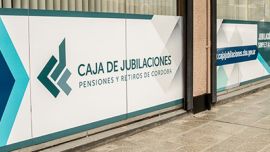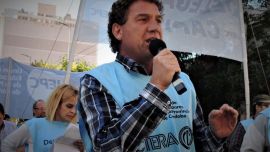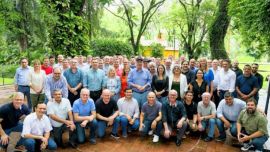The International Monetary Fund has extended its safety net under some of Latin America’s biggest economies as the global pandemic hits the region particularly hard.
After markets suffered a free-fall in the first quarter, Chile and Peru rushed to join Mexico and Colombia as the only nations in the world with access to the Fund’s Flexible Credit Line, or FCL.
They got approval last month and, between them, the four countries can now tap US$107 billion in funding whenever they want, equivalent to about a tenth of the IMF’s total lending capacity.
That’s a valuable buffer if emerging markets suffer another wave of the “intense” outflows seen in February and March, said Alberto Ramos, chief Latin America economist for Goldman Sachs Group Inc. Investors pulled a record US$83 billion from developing-world equity and debt markets in March, according to the Institute of International Finance.
The Washington-based IMF has had a controversial history in Latin America in recent years after loans to Argentina and Ecuador led to protests when the fund called for austerity. The FCLs don’t have any such conditions.
“It’s money that comes with no strings attached. It’s just a phone call or email away,” said Ramos, who worked at the IMF from 1997 to 2003.
The credit lines are US$61 billion for Mexico, US$24 billion for Chile, and about US$11 billion each for Peru and Colombia. That exceeds the total funds that the IMF has set aside for more than 100 countries globally that have expressed interest in emergency financing to deal with Covid-19 fallout. The countries pay an annual commitment fee based on their level of access, with Mexico’s cost the largest at US$163 million.
External Shocks
The FCLs are available to countries with a track record of responsible policy making, but which also are vulnerable to external shocks.
Alejandro Werner, the IMF’s western hemisphere director, said last month that Chile and Peru have long met the qualifications for the credit line, but the global pandemic served as impetus for them to request it.
The four Latin American nations have relatively open economies, which increases their exposure to downturns in the world economy. Together, they form the trade-friendly Pacific Alliance bloc.
While Europe has the European Stability Mechanism to provide financial assistance to distressed members and Asia has the Chiang Mai Initiative, Latin America has no comparable regional backstop. Hence the growing importance of the IMF.
Among Latin America’s biggest economies, only Peru’s international reserves equaled at least 20 percent of its gross domestic product last year. More than a dozen countries in Asia have accumulated reserves above that level. The IMF also remains controversial in Asia based on criticism of its handling of the region’s financial crisis of 1997-1998, including its advice at the time and the conditions attached to major lending programs to South Korea, Indonesia and Thailand.
Nations in southeast Asia “have a lot of reserves, decent policies, market access,” said Mark Sobel, a former US Treasury official now at the Official Monetary and Financial Institutions Forum, a think-tank focused on economic policy and central banking, with offices in London and Singapore. “I think they’ve asked themselves ‘Would this really be beneficial to me? And do I want to be involved with the IMF?’” And they’ve stepped back from it.”
Precautionary
Latin America has been slammed by the global pandemic in part due to its weak health systems, limited testing capacity and large informal economies that make social distancing difficult. The region currently accounts for almost 50 percent of new daily coronavirus deaths.
The flexible credit line was created in 2009 to encourage countries to ask for assistance before they faced a full-blown crisis. Mexico was the first country to request it.
If a nation draws on the line, it needs to pay it back over 3.25 to 5 years.
The countries treat the funds as precautionary and none has ever drawn from them. That’s a big difference from the IMF’s relationship with Argentina, which has received tens of billions of dollars in disbursements from the record US$56 billion loan that it agreed to in 2018.
Stigma
Governments will probably will tap the IMF credit lines only if conditions worsen significantly, because doing so could spook investors, Ramos said.
“If someone sees you at the doctor, no one is going to say ‘What a diligent guy, he came preemptively,’” Ramos said. “The question is ‘Why is he seeing the doctor?’”
For now, the credit lines continue to be treated as a backup, to complement international reserves in the event of an emergency.
But if there’s another sharp downturn, the four countries nations may draw on the funds, said Ernesto Revilla, Citigroup Inc.’s head of Latin American economics and a former chief economist at Mexico’s Finance Ministry.
“There will not be a need to use the FCL generally if the shock is indeed transitory –– a recovery of the US in the third quarter, no further waves of virus contagion, and the markets remain supportive as they have until now,” Revilla predicted. “If any of these things are lost, then they might get used.”
-Bloomberg



















Comments